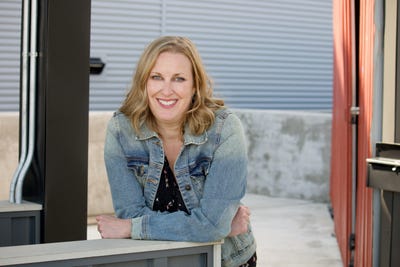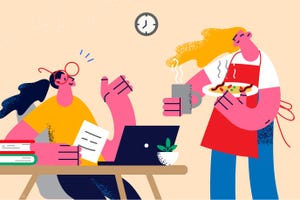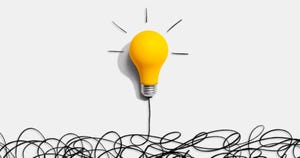6 things we learned at the Monterey Bay Aquarium’s Sustainable Foods Institute
From traceability to human trafficking, experts weigh in on the topics affecting our seafood supply.
Scientists, policy influencers, advocates, manufacturers, journalists, chefs and restaurateurs recently gathered at the aquarium’s Sustainable Foods Institute to dive deep under the surface of the seafood industry. Here are six major points that we took away from the Sustainable Foods Institute.
Technology will be the key to traceability in our seafood. If the end vision is boat to plate, how can we get there when the seafood supplier may be thousands of miles away, shipping a product through a complex supply chain that’s riddled with randomness, fragmentation and fraud?
Just as “trust marks” like “dolphin free” caught on, the next generation of labels will need to tell us a whole lot more, and that requires tracking the supply chain with bar codes, time stamps, data in an online cloud and more. But the systems to trace seafood in place now are limited and low tech (on paper).
“If you’re at sea, connectivity is an issue,” said Timothy Moore, senior partnerships advisor for the United States Agency for International Development (USAID) Oceans and Fisheries Partnership. “Vessels in Southeast Asia see it as a burden. [However], satellite companies have been bringing costs down, addressing the initial barrier that tech is expensive.”
“The window of opportunity for seafood fraud…you could drive a semitruck through it,” said Eric Enno Tamm, general manager for traceability initiatives at Ecotrust Canada. Ecotrust created a system called ThisFish, an online tool that combines seafood tracking and social media.
More mobile technology (and getting fishing boats to use it) will be key for change, as will buy-in from big suppliers who can set the standard and offer incentives so fisheries big and small will see the value in tracking their catches.
Scale means a lot when it comes to sustainability. Change happens when big companies see the value in sustainable practices like working to get responsibly raised/fished products, simply because of scale. “If big companies make it a pre-competitive issue, it’s not a niche differentiation then, it’s a standard,” said Dr. M. Sanjayan, a global conservation scientist, writer and Emmy-nominated news contributor.

Customers are starting to see the value in sustainable seafood. Photo: Tara Fitzpatrick
Did you know that you’ve probably eaten seafood that was brought to you by slave labor? For 18 months, four journalists from the Associated Press stalked ships in Southeast Asia where horrifically abusive practices were taking place.
“We basically confirmed things we’d been hearing about conditions on the boats from runaway slaves: 24-hour workdays, murder, beatings, men in cages, not docking for months and even years,” recounted Robin McDowell, who was part of that award-winning AP team of reporters. “These men had been kidnapped or tricked onto these boats and lured into this industry, and the Thai government went and said, ‘There’s nothing wrong here.’”
As a result of this investigation, many of the men were able to escape. But there are still 20 to 40 million people affected by forced labor. Organizations like The Issara Institute, which works with communities and businesses to tackle human trafficking and forced labor, are making a difference.
Consumers are starting to see the value in sustainable seafood. Think how much Starbucks changed the way we value coffee. Before Pumpkin Spice Latte became a household name, coffee was just seen as a generic product you scooped out of a can, put in the percolator and went about your day. The same thing is true of wine and cheese.
Those can serve as business models for a new appreciation of sustainable seafood, and getting consumers to pay a premium for it. It means something to today’s consumer, being able to connect with the fisherman in some way.
“More businesses are saying, ‘We’re not selling a commodity, we’re selling stories,’” said Eric Enno Tamm, general manager for traceability initiatives at Ecotrust Canada.
Marine plastics are affecting the fish we eat. More than 8 trillion pieces of plastic debris enter our watersheds each year from the U.S. alone. This can mean broken down bits of plastic silverware, plastic bottles, medicine bottles, toothbrushes and plastic grocery bags.
“There’s been many people who have tried to estimate how many pieces of plastic floating on the surface of the ocean and it’s about 200,000 metric tons. What does that mean? It’s about 1,000 blue wales. And wales are very dense and plastic is very light so that gives you an idea,” said Dr. Chelsea Rochman, assistant professor at the University of Toronto and UC Davis.
Dr. Letise LaFeir, California Ocean Policy Manager at the Monterey Bay Aquarium, said that preventing all this plastic in the first place is a better course of action than trying to clean up what’s already there. Policies like California’s controversial ban on plastic bags can be a way to make that happen.
“We are saying we can’t take a step backwards,” LaFeir said. “To ban this one source of plastic going into the ocean will set quite the precedent for other states in the country. It’s tangible and something you can engage people over. It’s an everyday choice you can make.”

Janet Napolitano spoke about her work at the University of California. Photo: Tara Fitzpatrick
The former Secretary of Homeland Security and Governor of Arizona is working with UC’s 10 chancellors to change food purchasing, food waste, public policy and the effects of food on energy and the environment.
“Our goal is zero waste by 2020 and we’re well on our way to that. The Food Initiative is two years old and we’re almost two-thirds of the way there,” Napolitano said, describing carbon councils, studies on local food purchasing and the greenest campuses imaginable.
The college campus is the perfect place to get an initiative like this going, she added.
“Our students—and I don’t think they’re that unique in this regard—are interested in doing something for the public good,” Napolitano said. “They don’t necessarily translate that as going into politics. They want to work on things to make the world a better place.”
Napolitano still thinks about security, she said, but in a different way.
“You think of security in so many different ways: your personal safety, your family your friends your workplace, your country, you’re thinking physical safety,” she said. “You also need to think about meta security risks. Meta in the sense that they’re huge, they’re international and maybe not a day-by-day evaluation. For example, the destabilization effect of food insecurity in a country and the affect of human migratory patterns. I do not have confidence that our national agriculture policy focuses on a sustainable food future. I think we have a lot of rules, a lot of regulations and a lot of programs that have been there for a long time. Changing things in Washington, D.C., takes persistence and consistence.”
About the Author
You May Also Like






